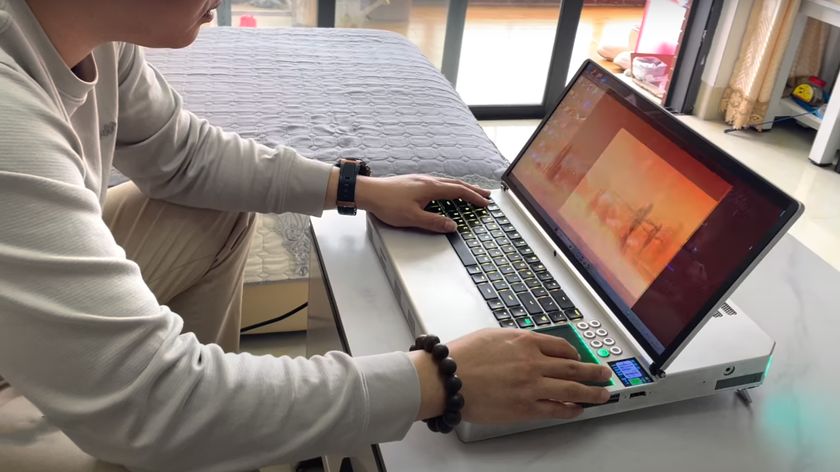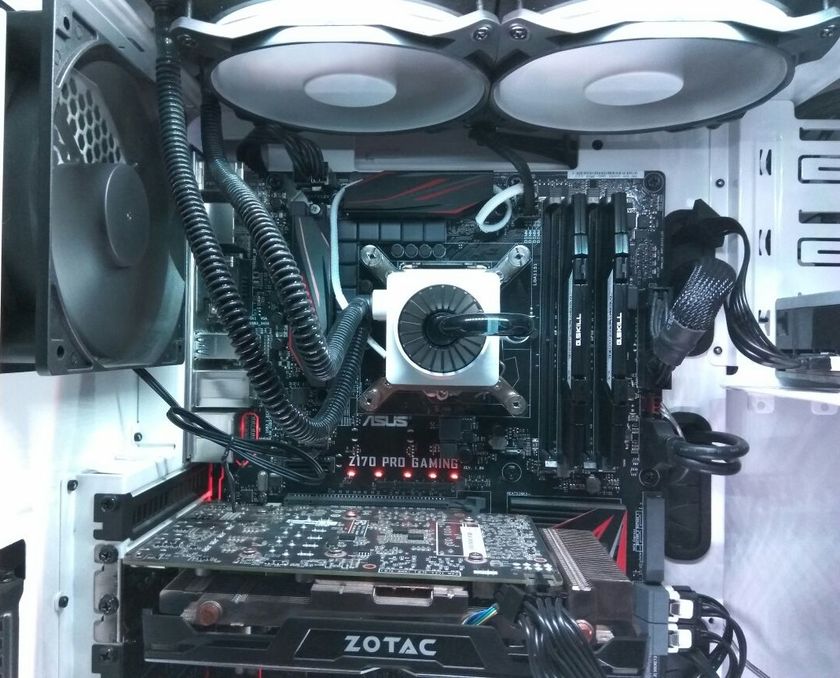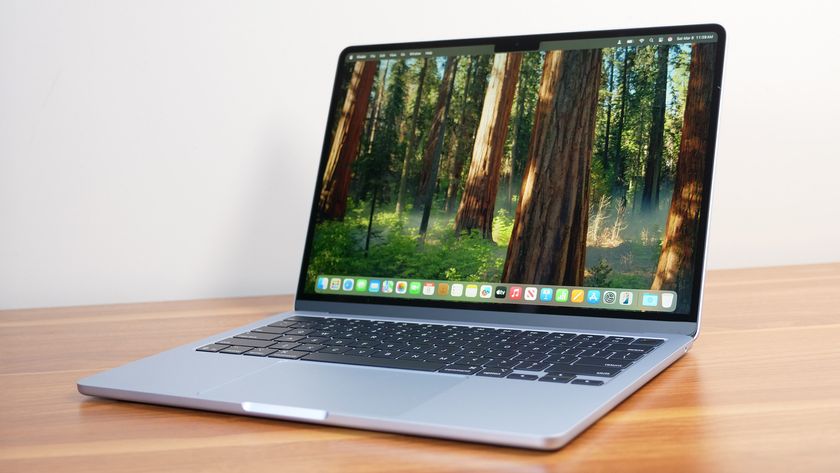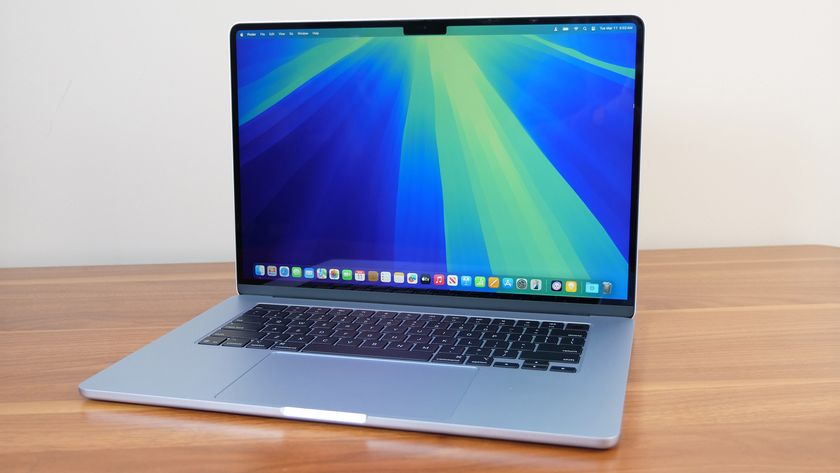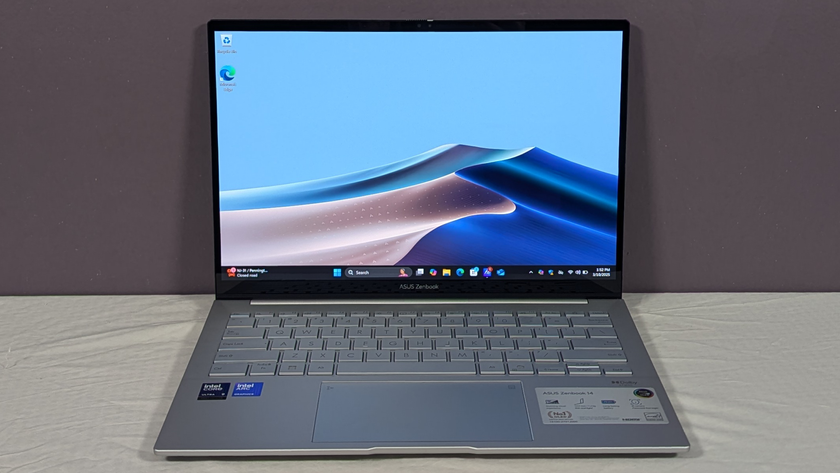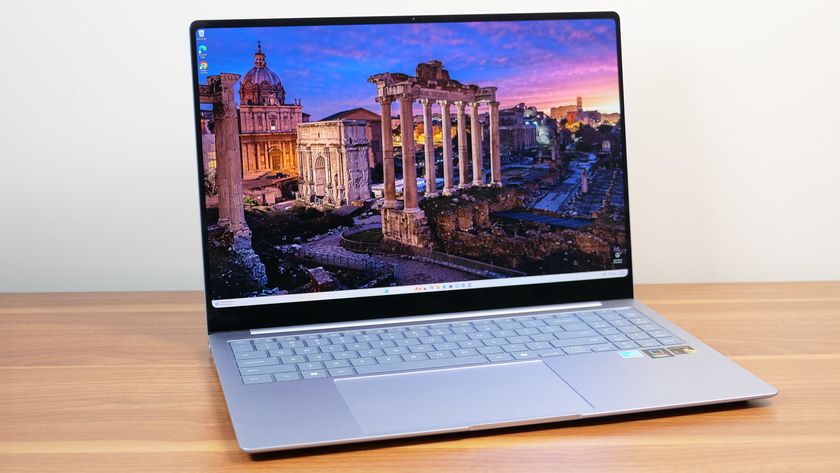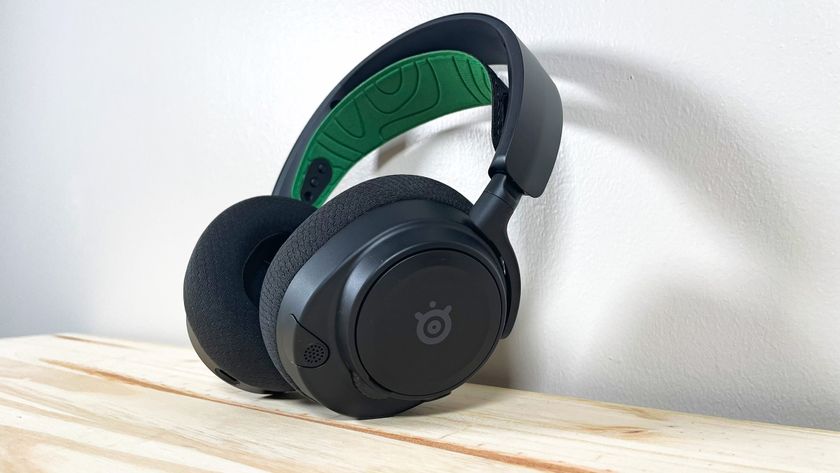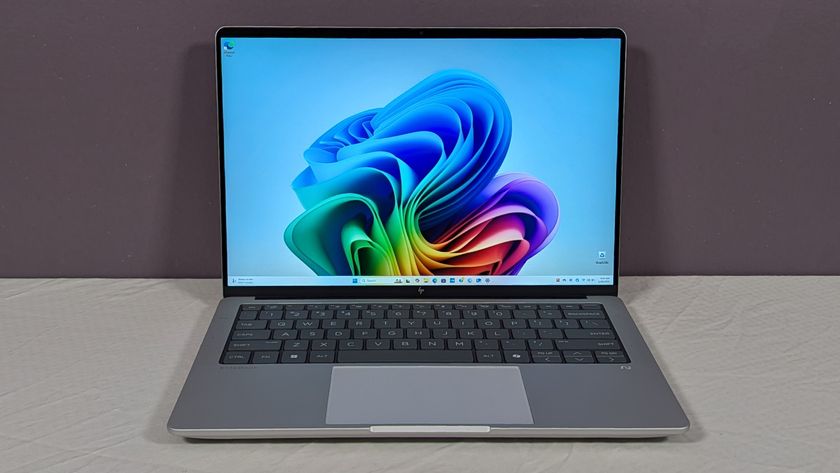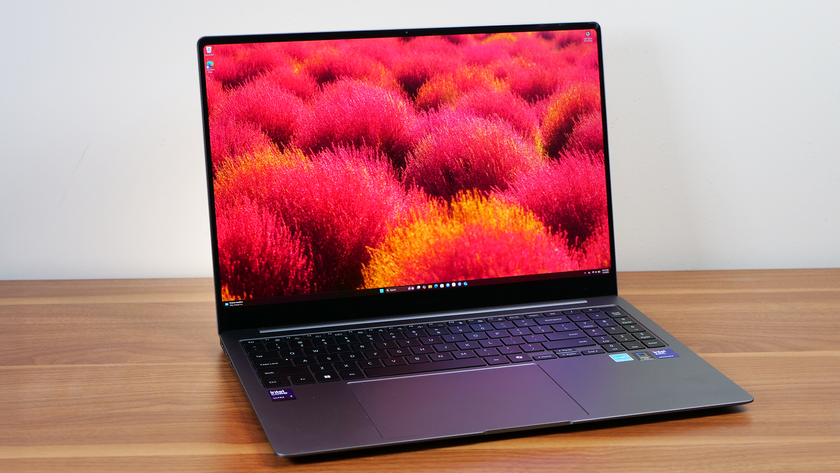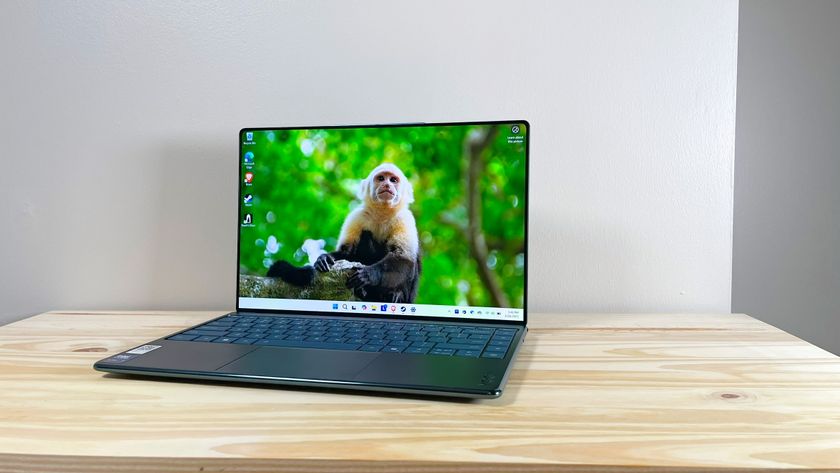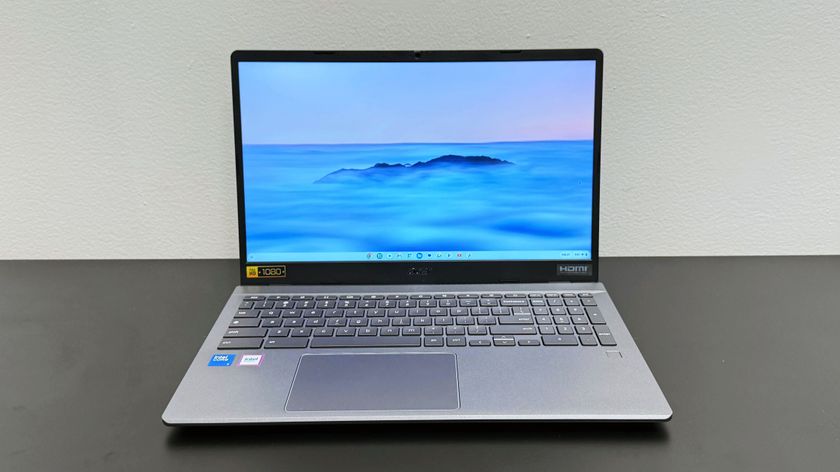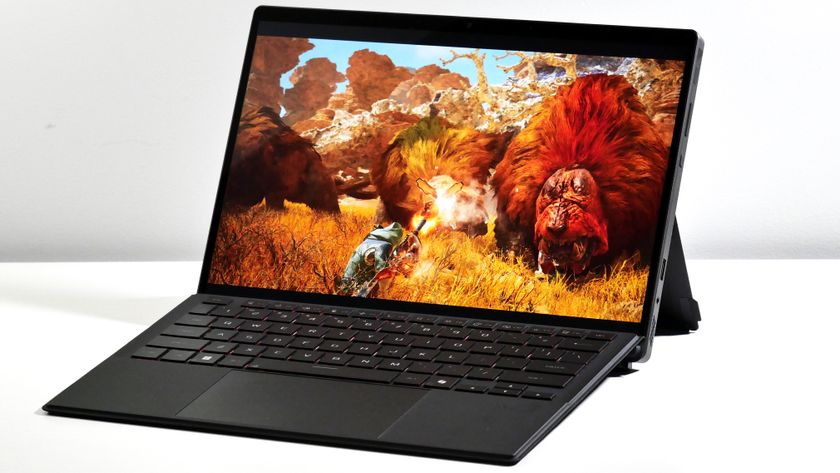Laptop Mag Verdict
This entertainment notebook delivers strong performance and USB 3.0 at an affordable price.
Pros
- +
Stylish design
- +
Large, comfortable touchpad
- +
Strong graphics performance
- +
USB 3.0 port
- +
Above-average battery life
Cons
- -
Lid picks up fingerprints
- -
Low-resolution screen
- -
Speakers could be better
Why you can trust Laptop Mag
When looking for an entertainment notebook that costs less than $1,000, you have to decide what bells and whistles you can live without, and what's most critical to an optimal experience. The ASUS N61Jv-X2 gets it mostly right. For $899, users get an Intel Core i5 processor, Nvidia GeForce GT325M graphics, and a handsome design. Plus, the N61Jv is the third notebook we've tested with Nvidia's Optimus technology, which means it can seamlessly switch between its powerful Nvidia GPU and the more energy-efficient integrated graphics for more battery life. However, we're not sure how much of a benefit this feature is in a 6-pound laptop, which raises the question as to whether ASUS made all the right decisions in building this value-priced multimedia machine.
Design
Unlike the U30Jc or the UL50, the lid of the N61Jv is glossy with a subtle wavy pinstripe pattern, much like the K42F. This looks cool, but it doesn't do a great job of hiding fingerprint smudges. Inside, however, ASUS has made several interesting design changes. The palm rest is rubberized, making it very comfortable to the touch.
Above the chiclet-style keyboard is the most striking feature: a silver speaker bar perforated by tiny holes. At the right side is a circular chrome power button encircled by a backlit ring; on the other side are buttons to control multimedia playback and to launch the ExpressGate Instant-On environment. At either end of the silver bar are two translucent strips that light up blue when the notebook is on. All in all, it has a very retro-chic look, like something Braun might have designed in the 80s.
Weighing 6 pounds even, the N61J is a bit heavier than most notebooks in its class, most of which have smaller 15.6-inch screens. The Samsung R580, for example, weighs 5.6 pounds. However, the N61Jv, at 15.4 x 10.6 x 1.1--1.5 inches, cuts a thinner profile to the R580's 16.2 x 10.7 x 1.3--1.6 inches.
Heat
After we played a Hulu video at full screen for 15 minutes, we were pleased to see that the N61Jv kept its cool; the touchpad measured 93 degrees Fahrenheit, the space between the G and H keys was just 91, and the middle of the underside was 89 degrees. The hottest place we measured was by the vent, which topped off at a reasonable 95 degrees.
Keyboard and Touchpad
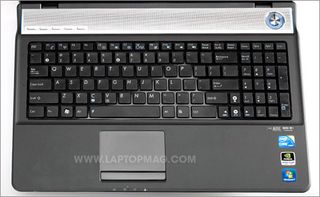
Click to enlarge
Like the UL50, ASUS fit a keyboard and number pad into the N61Jv; both are very similar in that the chiclet keys were quiet but offered good feedback. However, touch typists might be annoyed with the slightly shrunken right Shift key, as well as the overall flex.
The large and smooth touchpad had very little friction, and is slightly sunken to differentiate it from the surrounding palm rest. While the mouse buttons were combined into a single bar, they were crisp and responsive when pressed.
Display and Audio
The 16-inch LED-backlit display on the N61Jv was plenty bright, and we liked the crisp colors. While its resolution of 1366 x 768 was adequate for a notebook at this price, its glossy surface kicked back reflections and angles were somewhat limited. Image quality was fair. While watching a 720p episode of Fringe on Fox.com, we could easily make out the wrinkles in the characters' faces, though a DVD of Heroes looked somewhat grainy.
Despite the fact that the N61Jv has Altec Lansing Speakers and SRS Premium Sound, we were somewhat disappointed overall. There was very nice definition when listening to Led Zeppelin's "Over the Hills and Far Away," but bass was sadly lacking on this entertainment system. During the chorus, the higher notes drowned out the lower tones, making it sound a little harsh. Tweaking the settings using the SRS control panel did little to help. On the plus side, the volume was fairly loud when streaming Weezer's "Beverly Hills" on Slacker.
Ports and Webcam

Click to enlarge

Click to enlarge
The N61Jv has a large selection of ports; along the right side are two USB, eSATA/USB combo, and headphone and mic ports. Under the front lip is an SD Card reader. On the left is VGA, Ethernet, HDMI, and an ExpressCard/34 slot. But what's most notable is the USB 3.0 port on the left, meaning that consumers who purchase a USB 3.0 drive in the future will be able to take advantage of much faster transfer speeds.
In a Skype call, the N61Jv's 2-megapixel webcam recorded crisp and colorful video. A caller could easily make out details in our shirt and face, as well as the room behind us.
Performance
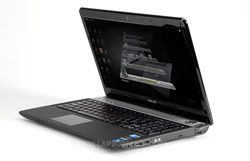
Click to enlarge
The 2.26-GHz Intel Core i5-430M processor and 4GB of RAM (upgradable to 8GB) powered the N61Jv to an excellent score of 5,841 in PCMark Vantage, which measures overall performance. That's about 900 points higher than the desktop replacement average, about 40 points higher than the Samsung 15.6-inch R580, which has the same processor, and practically equal to the similarly sized Acer Aspire 5740G. The 17-inch Samsung R780 ($799) has the same processor, but scored about 100 points higher.
Not only is the N61J's hard drive a relatively spacious 500GB, but it also zips along at 7,200 rpm, enabling it to blow past a number of notebooks in its category. We were able to duplicate a 4.97GB folder of multimedia in 2 minutes and 31 seconds, a rate of 33.7 MBps. That's 45 seconds faster than the R580 (26.2 MBps), and more than 10 MBps faster than the Sony VAIO E (21.7 MBps). Boot time, too, was a fast 57 seconds.
Transcoding a 114MB MPEG-4 to AVI using Oxelon Media Encoder (which uses the CPU's multiple cores to work more efficiently), took a zippy 56 seconds, 12 seconds faster than average. When we performed the same test using vReveal, a CUDA-enabled app, it took 2 minutes.
The USB 3.0 port was a nice addition, and on average it made file transfers more than twice as fast. Copying the 4.97GB folder to the notebook from a Seagate BlackArmor PS110 via USB 3.0 took just 1 minute and 36 seconds, a rate of 53 MBps. When we connected the external drive to a USB 2.0 port, that same transfer took nearly twice as long (3 minutes; 28.3 MBps). Likewise, copying a 1.66GB MPEG-4 via USB 3.0 took just 20 seconds (84.9 MBps); with USB 2.0, it was three times as long (58 seconds, 29.3 MBps).
Graphics Performance
The N61J's Nvidia GeForce GT325M GPU and 1GB of video memory fall somewhere between the Samsung R580's GT310M graphics and the Acer Aspire 5740G's ATI Radeon HD 5650 GPU. On 3DMark06, the N61J scored 5,997; that's 2,100 points higher than the R580, but 1,169 points lower than the 5740G. The 15-inch Apple MacBook Pro, which has an Nvidia GeForce GT 330M GPU, scored a higher 6,746 while running the same test in Boot Camp mode. The R780 has the same GPU as the MacBook Pro, and notched a score of 7,143 on the same test.
These preliminary findings were borne out when we measured the frame rates of certain games. With the resolution set to its native 1366 x 768, we averaged a very playable 54 frames per second on World of Warcraft; that's lower than the MacBook Pro (69 fps) and the Aspire 570G (64 fps), but much better than the R580 (33 fps). Likewise, on Far Cry 2 we eked out 23 fps at native resolution, which is higher than the R580 (15 fps) and equal to the MacBook Pro (24 fps), but well below that of the Aspire 5740G (35 fps). While the Samsung R780 scored just 1 fps faster than the N61J on these settings, keep in mind that the R780 has a higher native resolution of 1600 x 900.
Battery Life and Wi-Fi
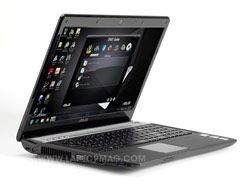
Click to enlarge
One of the advantages that Nvidia Optimus' automatic switchable graphics is supposed to give consumers is additional battery life. The N61J saw a runtime of 3 hours and 28 minutes on the LAPTOP Battery Test (web surfing via Wi-Fi). That's much better than the desktop replacement average (2:27) and just shy of the mainstream notebook average (3:40). The R580, which has a much weaker GPU running all the time, got nearly the same time. The Samsung R780 lasted more than an hour less (2:11) than the N61Jv. However, the 15-inch MacBook Pro, which has its own graphics-switching technology, lasted nearly 8 hours on the same test.
Throughput from the Atheros AR9285 802.11n Wi-Fi card was generally quite good on the N61Jv. At 15 feet from our router we saw an average transfer speed of 44.4 Mbps, which was halved to 20.8 Mbps at 50 feet from the access point.
Configurations
The N61JV-X2 is an Amazon specific SKU and is $899. On ASUS' site, other options listed for the N61Jv include Intel Core i3 processors, and hard drives up to 640GB in size. ASUS also offers a few other configurations of the N61V: the N61Jq has a 1.6-GHz Intel Core i7-710QM processor, ATI Mobility Radeon HD 5730 graphics; the N61Vg features older Intel Core 2 Duo CPUs and Nvidia GeForce FT220M graphics, and the N61Vn is configurable with a 2.0-GHz Intel Core 2 Duo Q9000 processor and Nvidia GeForce GT240M graphics.
Green Testing
It took 2 hours and 12 minutes to completely recharge the N61Jv's battery. During that time, to used an average of 49.6 watts. When we multiply those two figures and divide by the battery life, we arrive at its LAPTOP Battery Efficiency Rating of 31.5, which is better than the mainstream average of 36.8. The N61Jv is not rated by EPEAT.
ExpressGate
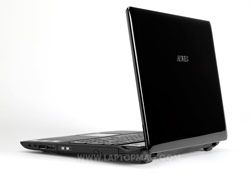
Click to enlarge
Pressing the ExpressGate button on the upper left-hand side of the deck launched the instant-on operating system in just 10 seconds. Once we configured the wireless settings and web browser, getting onto the Internet took just 15 seconds more. Other apps inside ExpressGate include Skype, instant-messaging, the Splashtop Gaming portal, and access to music and photos on the notebook. We were also pleased to see that we could see files on an attached external drive.
Software and Warranty
Thankfully, ASUS packs the N61Jv not with trialware, but with a bevy of its own utilities, including CopyProtect, SmartLogon, Power4Gear Hybrid, Live Update, Life Frame 3, and AI Recovery Burner. Third-party software includes CyberLink TrueTheater HD, Trend Micro Internet Security 2009/2010, and a trial of Microsoft Office.
The notebook comes with a one-year global, 30-day Flawless Dot Guarantee, two-way free shipping, 24/7 tech support, and a one-year accidental warranty that covers drops, spills, power surges, and fire damage with one-way shipping and one incident per notebook.
Verdict
We like the design and power that ASUS packs into the N61Jv-X2, and those who like to back up a lot of data will appreciate the blazing USB 3.0 port. But while Nvidia's Optimus technology adds battery life to this laptop, we think a lot of shoppers would rather have a higher-resolution display than switchable graphics in a 16-inch, 6-pound machine. Though it's not as portable, we prefer the 17-inch Samsung R780, which has similar performance to the N61Jv but offers a 1600 x 900 screen and better speakers for $100 less.
ASUS N61Jv-X2 Specs
| Brand | ASUS |
| CPU | 2.26-GHz Intel Core i5 430M |
| Card Slots | 8-1 card reader |
| Company Website | http://www.asus.com |
| Display Size | 16 |
| Graphics Card | Nvidia GeForce GT325M, Intel GMA HD |
| Hard Drive Size | 500GB |
| Hard Drive Speed | 7,200rpm |
| Hard Drive Type | SATA Hard Drive |
| Native Resolution | 1366x768 |
| Operating System | MS Windows 7 Home Premium (64-bit) |
| Optical Drive | DVD SuperMultiDrive |
| Optical Drive Speed | 8X |
| Ports (excluding USB) | Headphone, HDMI, ExpressCard/34, Ethernet, VGA, USB/eSATA, Microphone |
| RAM | 4GB |
| RAM Upgradable to | 8GB |
| Size | 15.4 x 10.6 x 1.1 - 1.5 inches |
| USB Ports | 3 |
| Video Memory | 1GB |
| Warranty/Support | 1-year/24/toll free |
| Weight | 6 pounds |
| Wi-Fi | 802.11a/b/g/n |
